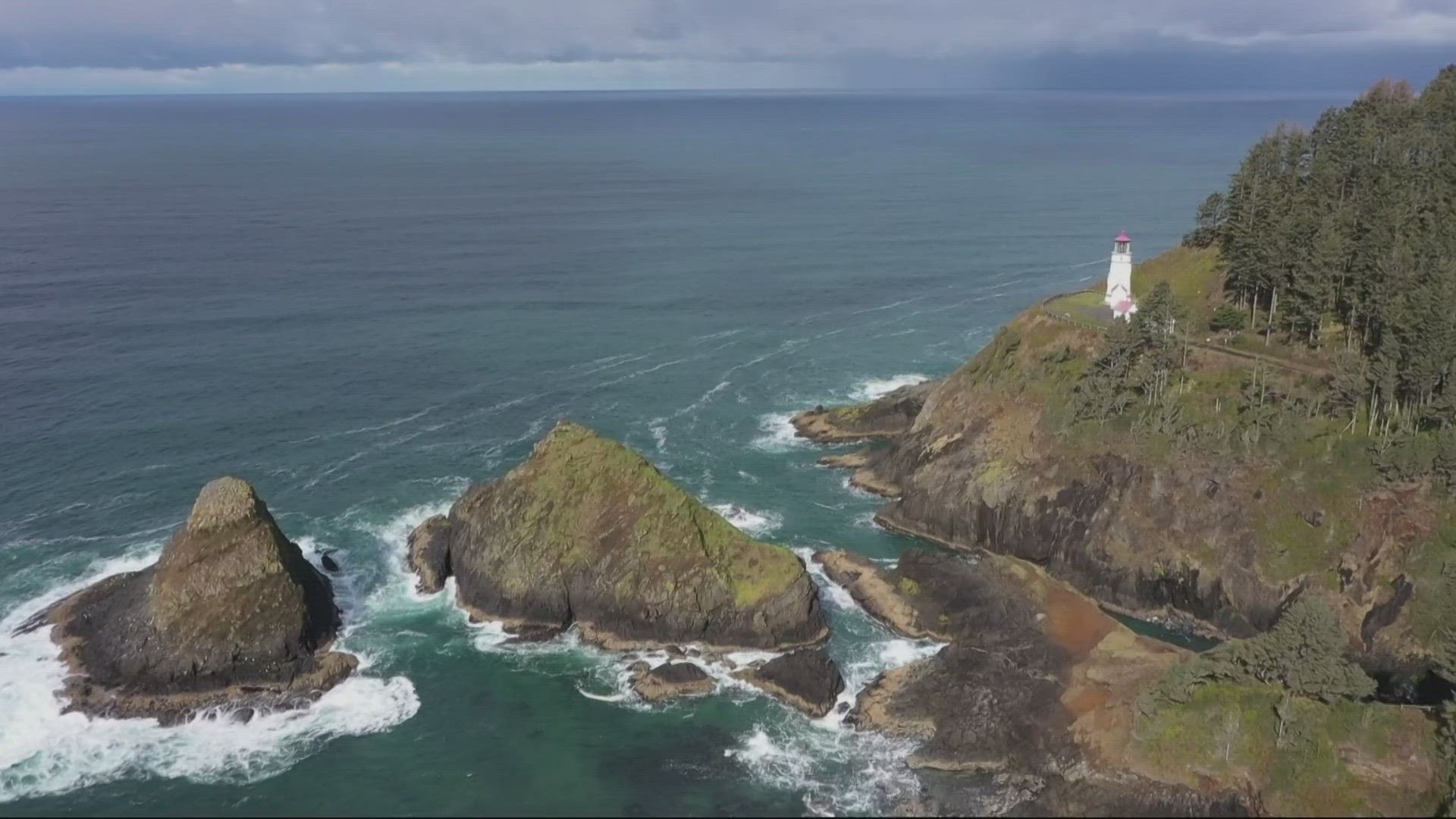PORTLAND, Ore. —
A team of Oregon State University researchers will be looking for new ways to measure and reduce the impact of carbon dioxide in the world’s oceans, a problem with far-reaching implications both in the water and on land.
Earlier this month, the National Oceanic and Atmospheric Administration announced more than $24 million in grant funding for projects looking at ways to remove carbon, or reduce its effects, in coastal waters.
Among the recipients, Jennifer Fehrenbacher and Burke Hales, both professors at OSU’s College of Earth, Ocean and Atmospheric Sciences, who together received more than $2.5 million in funding.
And while they’ll each be taking different approaches to their research, both agree that it’s long past time to begin looking for new ways to buffer the impacts of carbon dioxide absorbed by the ocean.
“If someone had been doing what we're doing now 50 years ago, things would be different today,” said Hales. “And so 50 years from now, people are going to be happy that we did this in the present.”
Hales said that the world’s oceans having been absorbing 25 to 30% of human-caused carbon dioxide emissions since people began converting forests to farmland and burning fossil fuels.
“Over the history of the Industrial Revolution going back to the late 1800s, we think the oceans have absorbed almost 200 billion tons of carbon in the form of carbon dioxide,” he said.
With that much carbon dioxide absorbed into the sea, the chemistry of the water has begun to change, something Fehrenbacher described as “climate change’s evil twin.”
“One of the responses is that the pH of the ocean goes down,” Fehrenbacher said. “Organisms are going to have a harder time building their shells in the ocean as CO2 in the ocean is absorbed from the atmosphere.”
Mussels, oysters, clams and other shellfish use carbonate ion to build their shells and, as pH goes down and acidity increases, carbonate ion becomes scarce.
“They'll build that shell, but sometimes by the time they get done, their energy reserves will be so exhausted that they die,” Hales said.
But the impacts of a struggling shellfish population extend far beyond the sea floor. In 2007, the Whiskey Creek oyster hatchery in Netarts Bay, which provides larvae to oyster farms up and down the coast, saw a whole season’s worth of young shellfish die suddenly.
In the aftermath, it was discovered that highly acidic waters had corroded the shells of the larval oysters.
“That's a commercially important crop. It's harvested, it's farmed, it's cultivated, so it has a direct financial impact,” said Hales, adding that creatures like mussels often make up a good chunk of the intertidal landscape.
“These types of organisms do much more than just feed us and allow us to make a profit. They build structures and the structures that they build benefit the food web,” he said.
To mitigate the local impacts of ocean acidification, Hales said that there have been times when water-soluble minerals like sodium carbonate have been added to seawater. But the production of those minerals often requires high heat and creates substantial carbon dioxide emissions of its own, which would eventually end up back in the ocean.
“So what we're talking about now is how do we do this in a way that is truly clean, right? Truly carbon effective,” Hales said.
Hales plans to experiment with an electrolytic process, that will run on renewable energy from wind, solar or the university’s wave energy program.
“We actually take 2 electrodes and we put them in seawater and apply voltage and some power to these electrodes,” he said, explaining that one of the electrodes will produce basic seawater, while the other will produce acidic seawater.
The acid side will be buffered with alkaline minerals to decrease the acidity, then “when we put everything back together, we have a net result that has produced a more alkaline ocean without a release of CO2,” Hales said.
Hales stressed that his experiments will be done in a controlled environment, not the open ocean, and are still very much in the proof-of-concept stage. Still, he thinks it's not impossible that some form of the electrolytic process could be deployed to counteract local acidification effects within "several years."
For her part, Fehrenbacher will be examining how organisms react to both the change in ocean temperature and chemistry, specifically with tiny animals called foraminifera, which she described as “charismatic microfauna.”


“We'll quantify their growth by using something called micro CT, so it's like taking a CT scan of your body at the doctor's office, but we're going to take a CT scan of these microscopic organisms,” she said. “We're going to see how it affects their growth and quantify it then model what will happen in a future warmer world.”
Both Fehrenbacher and Hales acknowledged that the world’s oceans took millions of years to reach their state of chemical equilibrium that allows life to flourish and neither is aiming to change the chemistry of an entire ocean.
But if they can learn ways to mitigate the impacts of ocean acidification locally, and how ocean life reacts to it, they’ll have added a valuable adaptive tool that will last well into the future.
“Will it change the global ocean on the time scales of our lifetimes?” Hales said. “Not noticeably, but it will help locally and it will persist into the global ocean long after we're gone.”

